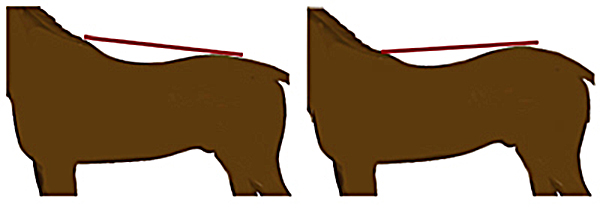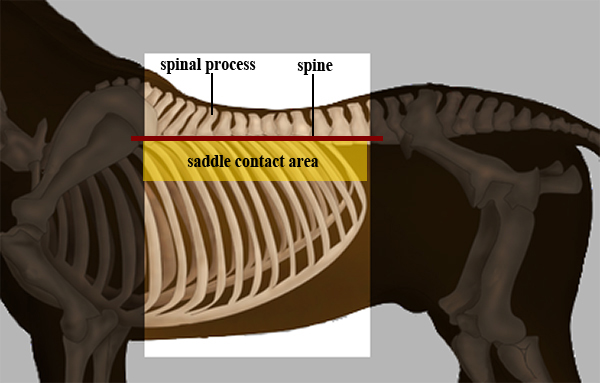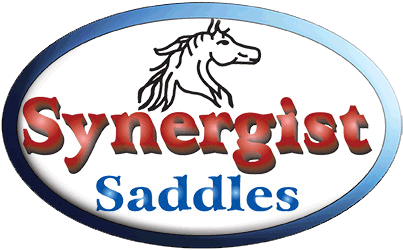If you’ve been around horses even a short time you’ve probably heard the term uphill or downhill horse. We’re going to talk about how this affects saddle fit. First of all there is a lot of confusing information on this topic so let’s clarify a couple of things first. Uphill or downhill balance is different than uphill or downhill conformation. One refers to movement while the other refers to structure.
Uphill ‘balance’ refers to the collection of a horse in motion. This is a horse that has been taught to shift his weight to the rear, lightening the forehand and giving the impression that the horse is uphill.
 Uphill ‘conformation’ refers to a horse that is standing on a flat surface and has withers that are higher than his croup. Downhill conformation is the opposite with the croup higher than withers. Some say your horse is uphill if the elbow is higher than the stifle, and uphill if the stifle is lower than the elbow. Others get way more technical about this and say locate the lumbosacral joint and then draw a line from there to the base of the horse’s neck, between the 5th and 6th vertebrae.
Uphill ‘conformation’ refers to a horse that is standing on a flat surface and has withers that are higher than his croup. Downhill conformation is the opposite with the croup higher than withers. Some say your horse is uphill if the elbow is higher than the stifle, and uphill if the stifle is lower than the elbow. Others get way more technical about this and say locate the lumbosacral joint and then draw a line from there to the base of the horse’s neck, between the 5th and 6th vertebrae.
Wow! That was a mouthful. Fortunately for saddle fit we are only concerned whether the ribcage is uphill or downhill. Going with any of the previous descriptions a horse could be uphill but have a ribcage that hangs downhill or vice versa.
Keep in mind, the spine doesn’t follow the topline of a horse. The topline follows the top of the spinal processes. The spine is lower. This is where the ribs attach.
 So we’re actually only concerned with the area between the back of the shoulder blade and the last rib between 2 to 7 inches down from the middle of the back. How level this area determines how your saddle will sit on the back of the horse.
So we’re actually only concerned with the area between the back of the shoulder blade and the last rib between 2 to 7 inches down from the middle of the back. How level this area determines how your saddle will sit on the back of the horse.
If you have a horse whose rib cage is downhill, with the front of the ribcage lower than the back, your saddle will tend to slide forwards especially going downhill. This can result in a horse that is chronically sore in the shoulder area. When we fit a saddle we can build the front up to level the saddle so the rider is more balanced however there is nothing we can do to help the horse. A good pad is a must for a downhill rib cage.
If the rib cage is uphill the saddle wants to slide back and then the end of the saddle can dig into the soft tissue behind the last rib. A breast collar helps in these situations.
Obviously a level rib cage is what is desired. Next month we will continue this topic and focus on the ‘uphill’ versus ‘downhill’ horse.

Comments 1
Thank you Dave. Great information, will have to go out tomorrow and study Slider’s conformation.